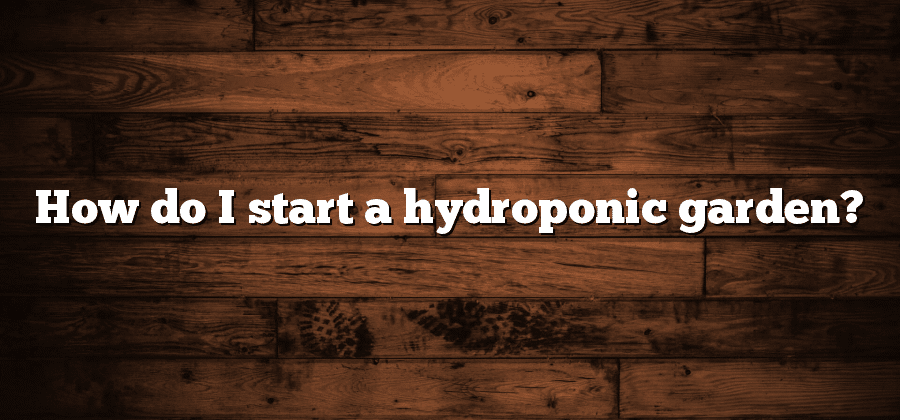Benefits of Hydroponic Gardening
Hydroponic gardening, the practice of growing plants without soil, has gained popularity in recent years for its numerous benefits. One of the main advantages of hydroponics is its ability to maximize crop yield in a limited space. By providing plants with all their necessary nutrients directly in water, hydroponic systems eliminate the limitations of soil quality and availability, resulting in larger, healthier plants.
In addition to increased productivity, hydroponic gardening also offers precise control over the growing environment. With the ability to adjust factors such as temperature, humidity, light, and nutrient levels, growers can create the optimal conditions for each specific plant’s needs. This precision allows for year-round cultivation and the ability to grow a wide variety of crops regardless of the local climate or season. Furthermore, the controlled environment also reduces the risk of pests and diseases, minimizing the need for pesticides and other harmful chemicals.
Choosing the Right Hydroponic System
When it comes to choosing the right hydroponic system for your garden, there are several factors that you should consider. Firstly, you need to think about the size of your garden and how much space you have available. If you have limited space, a vertical or stacked system may be a good option, as it allows you to maximize your growing area. On the other hand, if you have a larger garden, you may prefer a horizontal or flood and drain system.
Another important factor to consider is your level of experience and expertise in hydroponic gardening. If you are a beginner, it may be best to start with a simpler system, such as a wick or water culture system. These systems are relatively easy to set up and require less maintenance. However, if you have more experience and are looking to expand your capabilities, you may want to consider more complex systems, such as nutrient film technique (NFT) or aeroponics.
In conclusion, choosing the right hydroponic system is crucial for the success of your garden. By considering factors such as space availability and your level of expertise, you can select a system that suits your needs and allows you to grow healthy and thriving plants.
Essential Equipment for a Hydroponic Garden
Hydroponic gardening offers a unique and efficient way to grow plants without the need for soil. To successfully set up and maintain a hydroponic garden, there are several essential equipment pieces you will need. Firstly, a quality hydroponic system is crucial. This system is typically made up of trays or containers to hold the plants, a water reservoir, and a pump to circulate the nutrient solution. Choosing the right hydroponic system will depend on the size of your garden and the types of plants you want to grow. Some popular options include nutrient film technique (NFT), deep water culture, and ebb and flow systems.
In addition to the hydroponic system, lighting is another crucial piece of equipment for a successful hydroponic garden. Since plants in hydroponics rely solely on artificial light, it is essential to invest in high-quality grow lights. LED grow lights are a popular choice as they provide the necessary spectrum of light needed for optimal plant growth. The intensity and duration of the lighting will vary depending on the stage of plant growth and the specific plant species being cultivated. Maintaining the correct amount of light is vital to ensure healthy and robust plants in your hydroponic garden.
Selecting the Ideal Location for Your Garden
When it comes to selecting the ideal location for your hydroponic garden, there are a few key factors to consider. First and foremost, you’ll want to choose a spot that receives plenty of sunlight throughout the day. Sunlight is essential for the growth and development of plants, so finding a location that gets at least six to eight hours of direct sunlight is crucial. Consider the positioning of your garden in relation to buildings, trees, or any other structures that may cast shadows and obstruct sunlight. Additionally, be mindful of any potential obstructions, such as fences or walls, that may limit air circulation. Good air circulation is necessary to prevent the buildup of humidity and moisture, which can lead to the growth of mold and disease in your plants. Hence, selecting a location with adequate air movement will help ensure a healthy and thriving hydroponic garden.
Understanding Nutrient Solutions for Hydroponics
Hydroponic gardening has gained popularity in recent years due to its efficient and sustainable nature. One crucial aspect of hydroponics is understanding nutrient solutions. Unlike traditional soil-based gardening, hydroponics relies on water-based nutrient solutions to provide essential elements to plants. These nutrient solutions are carefully formulated to meet the specific needs of each plant, ensuring optimal growth and development.
The nutrient solutions used in hydroponics typically consist of a combination of macronutrients (such as nitrogen, phosphorus, and potassium) and micronutrients (such as iron, zinc, and manganese). These nutrients are dissolved in water, creating a nutrient-rich solution that can be easily absorbed by the plant’s roots. It is important to note that the composition of nutrient solutions can vary depending on the type of plants being grown and their specific nutritional requirements. Therefore, it is crucial for hydroponic gardeners to have a thorough understanding of the nutrient needs of their chosen plants and to carefully monitor and adjust the nutrient solution accordingly.






